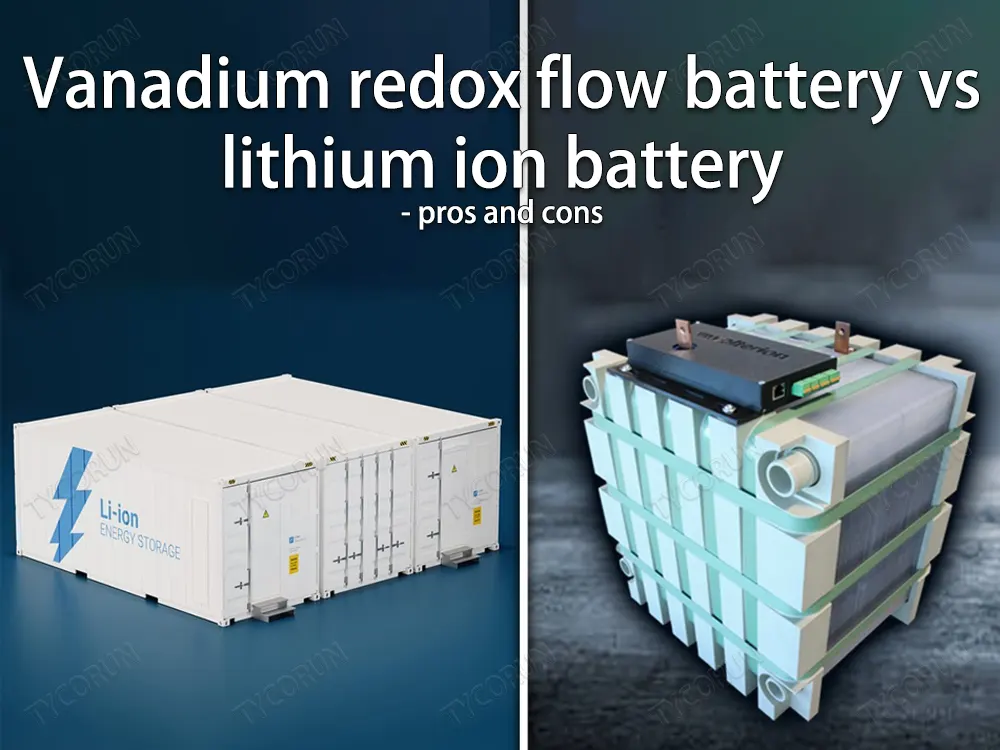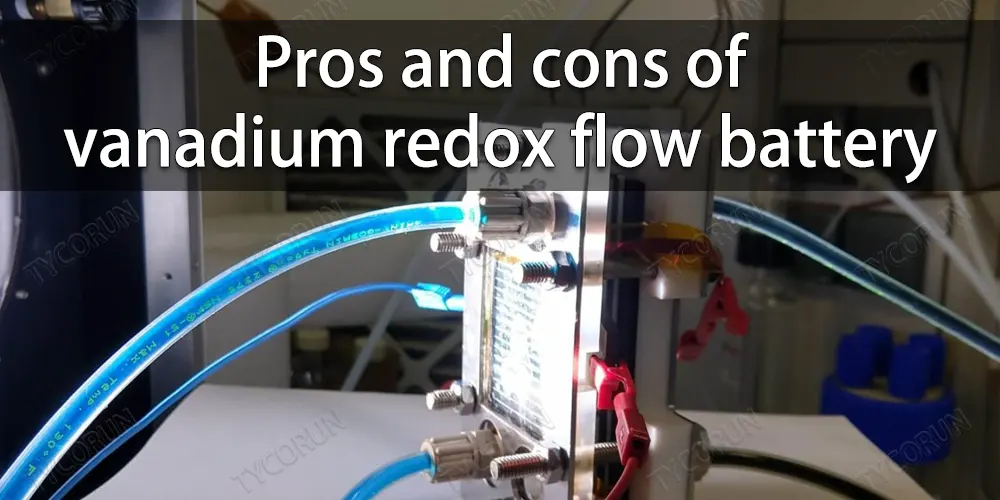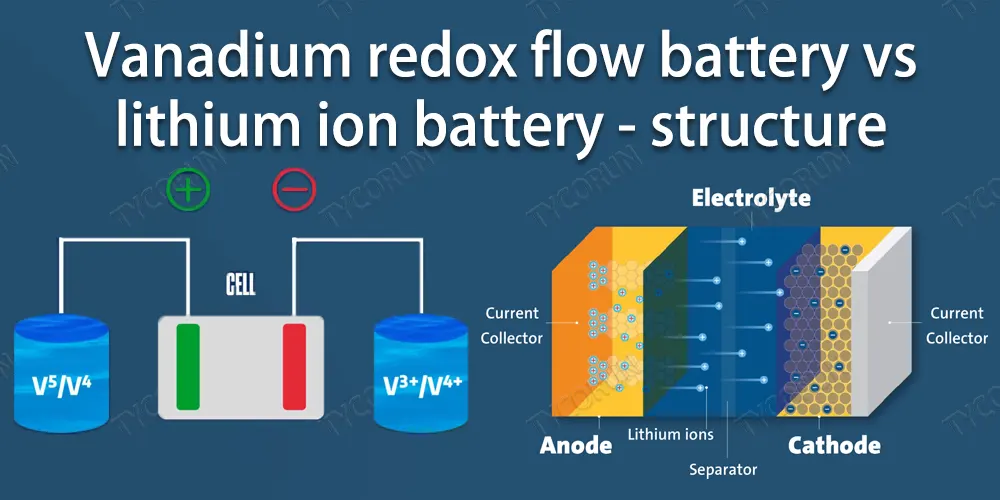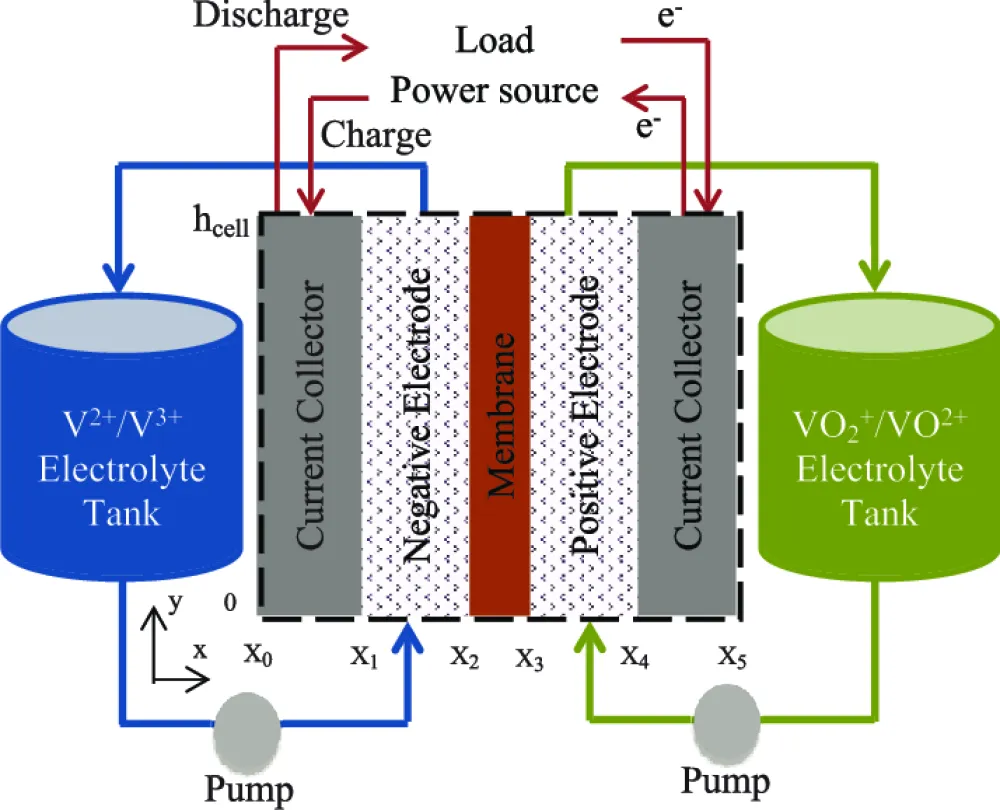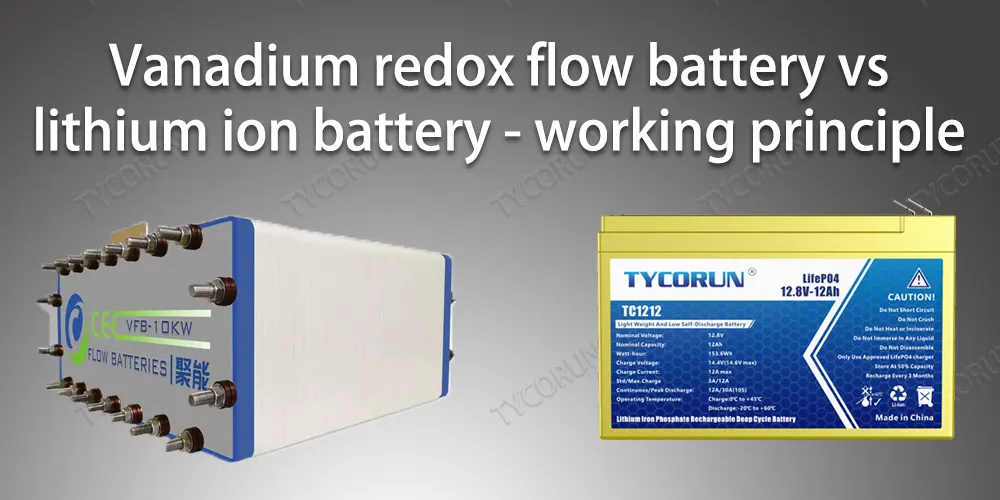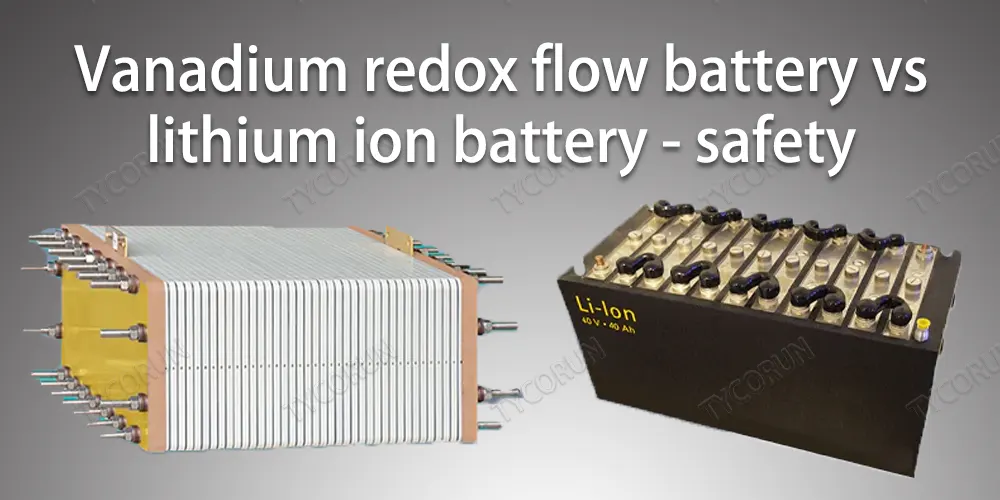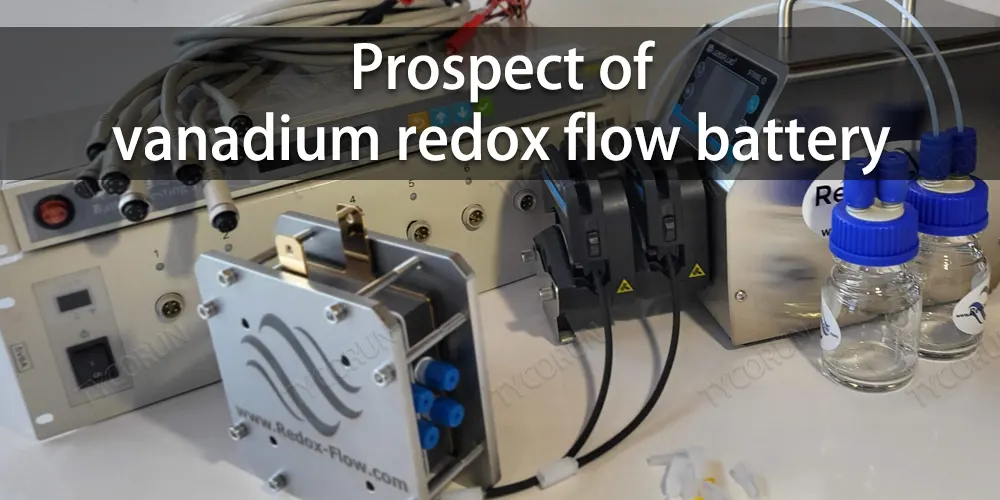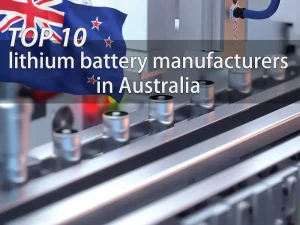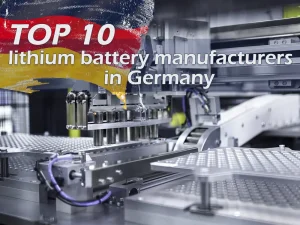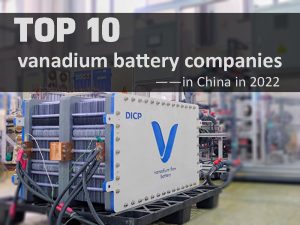Home » Battery vs comparation » Vanadium redox flow battery vs lithium ion battery – pros and cons
Vanadium redox flow battery vs lithium ion battery - pros and cons
In recent years, the scale of global energy storage installed capacity is in a stage of rapid growth, and under the trend of the global “green economy”, the call for renewable energy distribution and storage has also greatly boosted the energy storage solutions market.
As a kind of electrochemical energy storage, flow battery has attracted much attention in the industry because of its advantages of large capacity and high safety. Among them, vanadium redox flow battery is more favored by researchers because of its good battery performance. This article will compare the deference between vanadium redox flow battery vs lithium ion battery.

What is vanadium redox flow battery?
Vanadium redox flow battery is one of the best rechargeable batteries that uses the different chemical potential energy of vanadium ions in different oxidation states to conserve energy. It has the advantages of high charge and discharge efficiency, the capacity can be increased with the increase of liquid storage tank, and the electrolyte can be recycled.
It can be used as an energy storage device for clean energy such as water energy, wind energy, and solar energy, and can be used to smooth the load of the power grid, so as to ensure the orderly work of the power grid. Vanadium flow energy storage batteries are therefore extremely suitable for large-scale energy storage devices.
Pros and cons of vanadium redox flow battery
Vanadium flow battery is a new type of energy storage battery, which has the advantages of long service life, high energy conversion efficiency, flexible design and large energy storage, and it has deep discharge, low maintenance cost, efficient and convenient thermal management.
At present, the energy density of vanadium redox flow battery is less than 50Wh/kg, which has a large gap with the energy density of 160Wh/kg lithium iron phosphate, coupled with the flow system, so the volume of vanadium flow batteries is much larger than other batteries, often stored in containers or even buildings, and cannot be easily moved.
At the same time, vanadium redox flow battery also needs a more moderate temperature environment, and the operating temperature of 5-40° can not be applied to many scenarios.
Differences between vanadium redox flow battery and lithium ion battery
The differences between vanadium redox flow battery vs lithium ion battery are summarized as below from the aspects of structure, working principle, safety, cycle life and costs.
Vanadium redox flow battery vs lithium ion battery – structure
Lithium battery consists of a positive electrode, a negative electrode, an electrolyte and a diaphragm. The positive electrode material is generally lithium cobalt acid, lithium nickel cobalt manganese acid, lithium iron phosphate and other compounds, and the negative electrode material is generally graphite or lithium Titanic acid.
The electrolyte is a mixture of lithium salt and organic solvent, which mainly plays the role of conduction and ion transport. The diaphragm is used to isolate the positive and negative electrodes, prevent short circuits and limit ion transport rates. Morphology is divided into flexible packaging polymer batteries and steel shell packaging of liquid lithium-ion batteries.
The vanadium redox flow battery is mainly composed of electrolyte, electrode, selective proton exchange membrane, bipolar plate and fluid collector. The structure diagram is as follows. The structure of the vanadium redox flow battery is divided into two types: static and dynamic, and the solution in the static vanadium battery is static.
The structure of the dynamic vanadium battery is basically the same as that of the static vanadium battery, except that a liquid storage tank and an electrolyte circulation pump are added in the positive and negative terminals.
Unlike lithium batteries, the electrolyte of the flow battery and the pile are separated, because the electrolyte ions of the vanadium flow battery exist in an aqueous solution, there will be no thermal runaway, overheating combustion and explosion.
At the same time, vanadium batteries support frequent charge and discharge, which can be charged and discharged hundreds of times a day, and the liquid electrolyte makes overcharge and overdischarge will not cause an explosion.
Vanadium redox flow battery vs lithium ion battery – working principle
The working principle of lithium-ion batteries can be summarized as the shuttle of lithium ions between the positive and negative electrodes and the charge and discharge process of embedding and discharging.
When charging, lithium ions exit from the lattice of the positive electrode material, reach the negative electrode material through the electrolyte and embed in its lattice. In the discharge, it is the lithium ion in the negative electrode material after the removal, through the electrolyte re-embedding of the positive electrode material, this reversible embedding and removal process constitutes the charge and discharge process of lithium ion batteries.
The vanadium redox flow battery is the only battery with single active substance in the flow battery, which uses the change of vanadium ion valence to realize the conversion between electric energy and chemical energy.
The active substance of the vanadium flow battery is vanadium ion solution of different valence states, positive electrode VO2+/VO2+, negative electrode V2+/V3+, positive electrode and negative electrode are separated by ion membrane exchange.
Electrolyte is stored in two electrolyte storage tanks, which can be increased or replaced according to needs, and the electrolyte is pumped into the battery when working. The electrolyte is in a flowing state during battery charging and discharging.
Vanadium redox flow battery vs lithium ion battery – safety
The biggest difference between vanadium redox flow battery vs lithium ion battery is safety. In terms of elemental properties, vanadium is less active and safer than lithium. From the operating principle, the vanadium flow battery electrolyte is separated from the reactor phase, that is, the reaction site and the storage site of the active substance are separated, and thermal runaway, overheating, combustion and explosion will not occur.
Safety of lithium ion battery:
At present, the thermal runaway problem of lithium ion battery has become a major factor affecting the promotion of lithium ion batteries and electric vehicles.
The safety problem of lithium ion batteries is not only related to the heat dissipation design of the battery itself, but also has a close relationship with the nature of the material used in the battery, and the heat dissipation rate inside the battery is less than the heat production rate under certain conditions, resulting in heat accumulation.
At present, relevant studies believe that the possible reason for the thermal runaway of lithium batteries is that lithium ion batteries in the battery overcharge, external rapid charging or extrusion collision and other external cracking cases.
As a result, the chemical reactions between the battery electrolyte and the negative electrode material continuously inspired, or the short circuit inside the battery causes a large amount of heat inside, which causes the battery to heat out of control, and then generate the risk of burning and explosion.
This risk of explosion is inseparable from the characteristics of many materials and structures in lithium ion batteries.
① First of all, the electrolyte in the lithium-ion battery is mostly combustible low melting point organic grease, this organic electrolyte is flammable at high temperatures, in the case of excessive heat release or runaway thermal management of the lithium ion battery system, which is equivalent to an important cause of the battery explosion accident.
Under the condition of high temperature storage, it may also produce abnormal gas, causing the phenomenon of swollen battery.
② Secondly, the mostly used negative poles of lithium ion are graphite electrodes. The flammable specialty of graphite also makes the safety problem of lithium ion batteries more and more need to be strictly controlled.
③ In addition, in the current lithium battery system, the growth of lithium dendrites is unavoidable, can only try to slow down its growth. But when the lithium dendrites grow enough to pierce the diaphragm, it will cause the thermal management of the positive and negative short circuit caused by the loss of control, as well as the reaction of the metal lithium anode heat release, accompanied by a greater risk of explosion.
Safety of vanadium redox flow battery:
Unlike lithium batteries, flow batteries have excellent safety, and the energy storage medium of flow batteries is aqueous solution, which is more safe and reliable, without the risk of explosion or fire, and the flow battery has good uniformity.
Taking the vanadium flow battery successfully applied at present as an example, the system uses reversible changes between different valence vanadium ions to achieve battery charging and discharging, and then achieves the purpose of mutual conversion of chemical energy and electric energy.
Vanadium ions in vanadium redox flow battery are stored in aqueous solution, and the electrolyte is an aqueous solution of dilute sulfuric acid and vanadium, which is completely different from the low-melting flammable organic solvent used in lithium-ion batteries.
This characteristic makes vanadium redox flow battery greatly reduce the risk of overheating and resulting in explosion compared with lithium-ion batteries. It is said that as long as it is properly managed, there is almost no risk of explosion in vanadium redox flow battery.
Vanadium redox flow battery vs lithium ion battery – cycle life
The charge and discharge cycles of vanadium redox flow battery are more than 10,000 times, and some can even reach more than 20,000 times. In addition, after the battery life expires, the vanadium electrolyte solution can be recycled, the cost of vanadium electrolyte solution accounts for 40% of the total cost of the energy storage system, and the residual value after the energy storage system is scrapped is high.
From the perspective of the whole life cycle, the life of lithium batteries in the actual operation of energy storage projects may be less than eight years, but the life of vanadium redox flow battery can reach 20 years or more. The cost of a single cycle is lower than the energy storage technology of lithium batteries, so vanadium batteries have a good competitiveness in the long-term energy storage cycle life.
Vanadium redox flow battery vs lithium ion battery – cost
The factor restricting the development of vanadium flow batteries is that the cost is too high, especially when the energy storage station can make use of second-hand electric vehicle power batteries, which magnifies the drawbacks of the high cost of vanadium redox flow batteries.
According to statistics, the current vanadium flow battery cost is about 3-3.2 RMB /Wh, compared with the average cost of lithium batteries is only 1.2-1.5 RMB /Wh, about 40% of the vanadium redox flow battery.
Prospect of vanadium redox flow battery
China is rich in vanadium resources, and it is feasible to use vanadium batteries to replace lithium batteries in some areas, but the energy density of vanadium battery is not as good as lithium battery, and it occupies a large area, which makes it only suitable for large-scale energy storage projects.
Electrochemical energy storage mainly includes a variety of secondary batteries, lead-acid/lead-carbon batteries, lithium-ion batteries, sodium-sulfur batteries and flow batteries, etc., while lithium batteries are still the mainstream, accounting for about 90%. However, only 1% of flow batteries also present a market opportunity to go to a larger space.
According to McKinsey, long-term energy storage may begin large-scale deployment from 2025 (30GW to 40GW or 1TWh), by 2040, the global deployment of long-term energy storage installed capacity is expected to reach 1.5-2.5TW, the deployment of 85-140TWh of energy storage capacity.
It is expected that the installed capacity of vanadium redox flow batteries in the world will reach 32.8GWh in 2031, and the installed capacity of vanadium redox flow batteries in China will reach 24GW in 2030.

